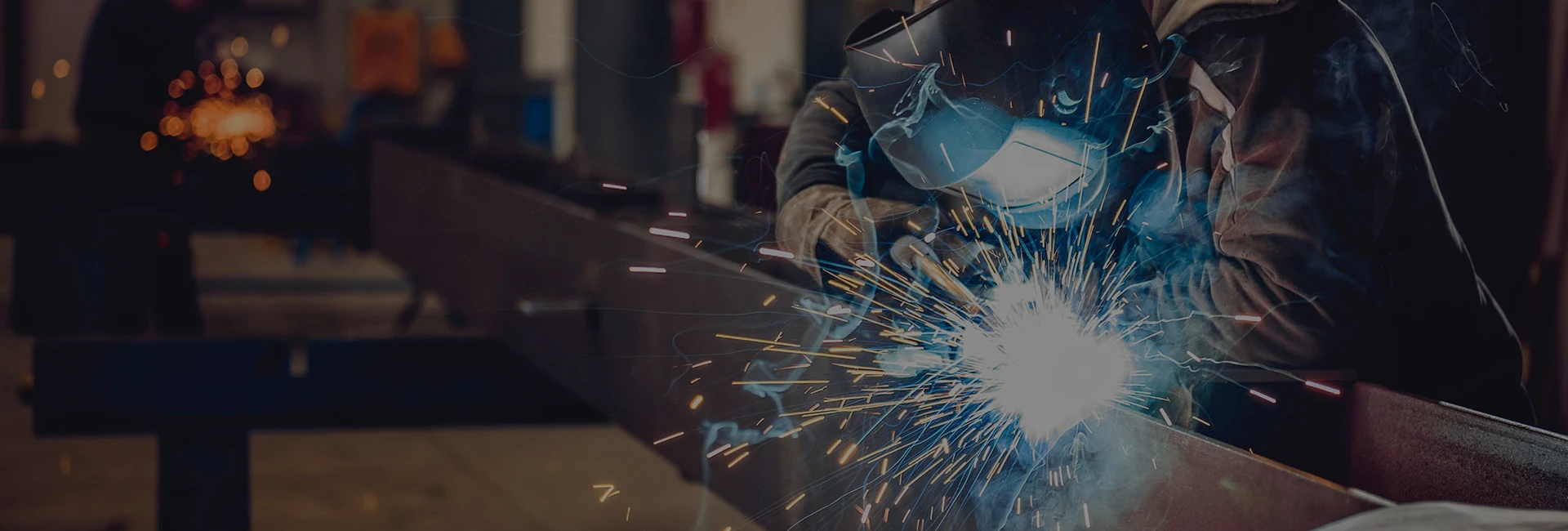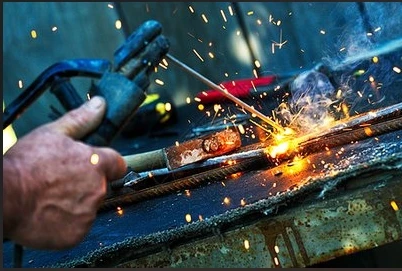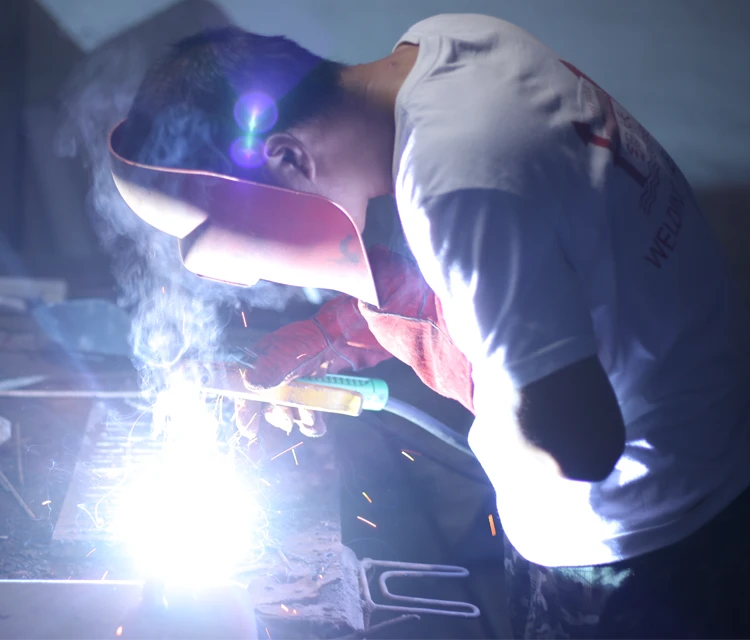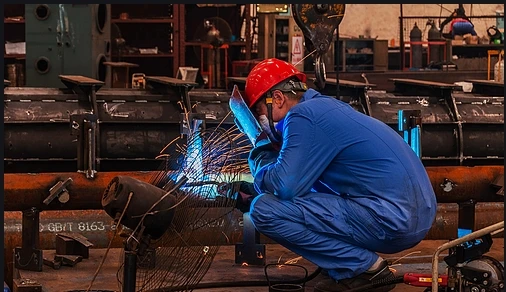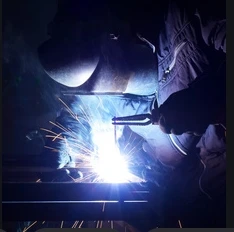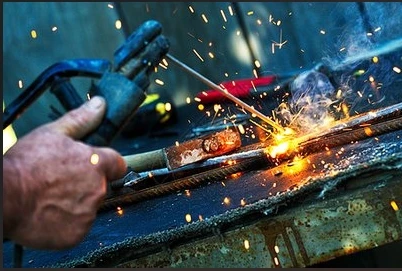Expert Cast Iron TIG Welding Rods for Strong, Flawless Repairs.
Aug . 29, 2025 06:40
The Evolving Landscape of Cast Iron Repair: Precision with TIG Welding Rods
In industrial maintenance and fabrication, the repair of cast iron components presents unique metallurgical challenges. Traditional methods, such as stick welding cast iron, often introduce high heat input, leading to issues like cracking, excessive hardening, and porosity. However, advancements in welding technology have significantly enhanced the efficacy and reliability of cast iron repair, particularly through the use of Tungsten Inert Gas (TIG) welding. This technical article explores the critical role of specialized cast iron tig welding rod in achieving high-integrity, durable repairs in demanding B2B environments. We will delve into industry trends, technical specifications, application advantages, and comprehensive vendor considerations, all aimed at empowering engineers and procurement professionals to make informed decisions.
Industry Trends in Cast Iron Welding and Repair
The global market for industrial maintenance and repair services is experiencing consistent growth, driven by the need to extend the service life of critical infrastructure and machinery. Within this sector, the demand for sophisticated cast iron repair solutions is escalating, particularly for components in high-stress, high-temperature, or corrosive environments. Key trends include:
- Shift Towards Precision Welding: There is a growing preference for lower heat input processes like TIG welding over traditional methods, especially for intricate repairs or thin-walled cast iron components. This minimizes thermal distortion and microstructural changes.
- Enhanced Material Science: Continuous innovation in cast iron filler rod compositions, including higher nickel content alloys (e.g., nickel welding rod for cast iron), provides superior ductility and machinability in the weld zone, crucial for post-weld processing.
- Sustainability and Cost-Efficiency: Repairing expensive cast iron parts using advanced welding techniques is often significantly more cost-effective and environmentally friendly than replacement, aligning with modern industrial sustainability goals.
- Digitalization and Training: Increased adoption of digital welding aids and a greater emphasis on specialized training for welders in precise techniques like TIG for cast iron.
These trends highlight the imperative for reliable, high-performance cast iron tig rod solutions that can meet the stringent demands of modern industrial applications.
Manufacturing Process of High-Performance Cast Iron TIG Welding Rods
The production of a high-quality cast iron tig filler rod is a complex process demanding precise control over material composition and manufacturing parameters. Our AWS EZ308 Cast Iron Welding Rods exemplify this commitment to quality. The process flow typically involves several critical stages:
1. Raw Material Sourcing and Preparation
- High-Purity Alloys: Selection of high-grade nickel, iron, copper, and manganese alloys. For AWS EZ308, the emphasis is on a proprietary blend that ensures optimal fluidity and metallurgical compatibility with various cast iron grades.
- Pre-Alloying: Precise blending and melting of raw materials under controlled atmospheric conditions to achieve the target chemical composition, minimizing impurities like sulfur and phosphorus which can lead to embrittlement.
2. Casting and Rod Formation
- Continuous Casting: The molten alloy is continuously cast into billets or smaller diameter rods, ensuring a uniform metallurgical structure throughout the length. This process is critical for producing a consistent casting electrode.
- Drawing/Forging: Billets are then hot or cold drawn through a series of dies to achieve the precise final diameters (e.g., 2.0mm-5.0mm for AWS EZ308). This enhances tensile strength and refines the grain structure.
3. Surface Treatment and Finishing
- Cleaning and Polishing: Rods undergo rigorous cleaning processes to remove drawing lubricants, oxides, and surface contaminants. Polishing ensures a smooth surface finish, crucial for stable arc characteristics during TIG welding.
- Straightening and Cutting: Rods are precisely straightened and cut to standard lengths, typically 1 meter, ensuring ease of handling and packaging.
4. Quality Control and Testing
Every batch undergoes stringent quality control. This includes:
- Chemical Analysis: Spectroscopic analysis to verify elemental composition against AWS A5.15 specifications.
- Mechanical Testing: Tensile strength, yield strength, and elongation tests on welded coupons to ensure the mechanical properties of the weld metal.
- Metallographic Examination: Microstructural analysis to detect defects like porosity, inclusions, or undesirable grain structures.
- Weldability Tests: Practical welding tests on cast iron samples to evaluate arc stability, fluidity, penetration, and spatter characteristics.
- Adherence to Standards: Products are manufactured and tested to international standards such as ISO 9001 for quality management and ANSI/AWS A5.15 for welding electrodes, ensuring consistent performance and safety.

Technical Specifications and Parameters of AWS EZ308 Cast Iron Welding Rods
Our AWS EZ308 Cast Iron Welding Rods are engineered for superior performance in TIG welding applications, offering an excellent balance of strength, ductility, and machinability. These rods are particularly suited for joining and repairing various types of cast iron, including grey, malleable, and ductile cast iron, often with minimal preheating requirements.
Key Features:
- Low Heat Input: Designed to minimize the heat-affected zone (HAZ), reducing the risk of hard, brittle zones and cracking.
- Excellent Machinability: The weld deposit is soft and easily machinable, simplifying post-weld finishing operations.
- Strong Ductility: Provides strong, ductile welds that can withstand thermal stresses and mechanical loading.
- Corrosion Resistance: Offers good resistance to corrosion, extending the service life of repaired components.
Product Specification Table: AWS EZ308 Cast Iron Welding Rods (2.0mm-5.0mm)
| Parameter | Value / Description |
|---|---|
| Product Standard | AWS A5.15, EN ISO 1071 |
| Classification | EZ308 (Similar to ENi-Cl, but specifically formulated for TIG) |
| Available Diameters | 2.0mm, 2.4mm, 3.2mm, 4.0mm, 5.0mm |
| Tensile Strength (Weld Metal) | ≥ 420 MPa (60 ksi) |
| Elongation (Weld Metal) | ≥ 15% |
| Hardness (Weld Metal) | 160-200 HB (Brinell Hardness) - Machinable |
| Typical Chemical Composition (wt%) | Ni: 50-60, Fe: Bal, Mn: 2-3, Cu: 1-2, Si: <1, C: <0.5 |
| Welding Current | DCEN (DC Straight Polarity) |
| Shielding Gas | 100% Argon |
| Service Life Expectancy | Matches or exceeds base material when properly applied |
Technical Advantages of High-Performance Cast Iron TIG Welding Rods
Utilizing a specialized cast iron tig welding rod, such as the AWS EZ308, offers distinct technical advantages over conventional welding methods for cast iron, translating directly into superior repair quality and operational efficiency.
- Minimized Heat Input and Distortion: TIG welding inherently offers precise control over heat input, which is crucial for cast iron. This minimizes the formation of brittle martensitic structures in the HAZ, significantly reducing the risk of cracking and warpage. This translates to less post-weld machining and improved dimensional accuracy.
- Superior Weld Quality and Appearance: TIG produces clean, spatter-free welds with excellent bead control and penetration. The resulting weld joint has a finer grain structure and lower porosity, enhancing both mechanical integrity and aesthetic appeal, particularly important for components with visible surfaces.
- Enhanced Machinability: The nickel-rich deposit of materials like AWS EZ308 ensures that the weld metal and HAZ remain soft and ductile, allowing for easy machining, grinding, and drilling after welding. This is a critical advantage for restoring complex geometries and tight tolerances.
- Corrosion Resistance and Durability: The specific alloy composition provides excellent corrosion resistance, making the repaired area resilient in aggressive chemical environments. This extends the component’s operational life and reduces maintenance frequency, contributing to significant energy saving and operational cost reductions.
- Versatility Across Cast Iron Types: These rods are effective across a broad spectrum of cast iron types, including grey, malleable, and ductile iron, offering a versatile solution for diverse repair needs.
These advantages underscore why advanced cast iron tig filler rod materials are becoming the preferred choice for critical cast iron repairs where reliability and precision are paramount.
Application Scenarios and Target Industries
The versatility and superior performance of cast iron tig welding rod make it indispensable across a wide array of industrial applications requiring the repair or joining of cast iron components. Our AWS EZ308 rods are particularly suited for:
Target Industries:
- Petrochemical Industry: Repair of pump casings, valve bodies, compressor housings, and pipeline components made from cast iron, which are exposed to corrosive fluids and high pressures. The enhanced corrosion resistance of the weld metal is vital here.
- Metallurgy and Heavy Manufacturing: Restoration of heavy machinery parts such as gearboxes, engine blocks, press frames, and machine tool bases where structural integrity and dimensional stability are critical.
- Water Supply & Drainage Systems: Repair of large diameter pipes, manifold blocks, and pump impellers susceptible to wear and cavitation, ensuring long-term operational reliability in aggressive water environments.
- Automotive and Marine: Repair of engine blocks, cylinder heads, exhaust manifolds, and marine engine components where high temperatures and corrosive exhaust gases demand robust repair solutions.
- Power Generation: Maintenance of turbine casings, generator frames, and other cast iron components in power plants, where reliability is paramount to avoid costly downtime.
Typical Application Scenarios:
- Crack Repair: Mending cracks in critical cast iron components, from hairline fractures to extensive damage, ensuring structural integrity is fully restored.
- Rebuilding Worn Surfaces: Restoring worn-out bearing housings, keyways, or sealing surfaces to original dimensions, extending component life and avoiding costly replacements.
- Joining Dissimilar Cast Irons: Effectively joining different grades of cast iron or joining cast iron to certain steel alloys where appropriate, offering metallurgical compatibility.
- Rectifying Casting Defects: Repairing porosity, blowholes, or other casting flaws during initial fabrication or refurbishment.

Vendor Comparison: Selecting the Right Cast Iron TIG Welding Rod Supplier
Choosing the right supplier for cast iron tig rod is as critical as selecting the rod itself. A reliable vendor not only provides a high-quality product but also offers technical support, consistent supply, and competitive pricing. When evaluating potential partners, consider the following differentiating factors:
Key Differentiating Factors for Vendors:
- Product Quality and Consistency: Does the vendor adhere to international standards (e.g., AWS, ISO)? Are their products certified? Consistent quality ensures predictable welding results and reduces rework.
- Technical Expertise and Support: Can the vendor provide detailed technical data, welding procedure recommendations, and troubleshoot specific application challenges? Access to expert advice is invaluable.
- Supply Chain Reliability: Is the vendor capable of consistently meeting demand, including large orders and urgent requirements? Evaluate lead times, inventory management, and logistics capabilities.
- Customization Capabilities: For unique applications, can the vendor develop or modify cast iron tig filler rod compositions or sizes?
- Pricing and Value Proposition: While cost is important, focus on the total cost of ownership, including product performance, reduced rework, and longevity of repairs.
Comparative Overview (Illustrative Example):
| Feature | Our AWS EZ308 Rods | Competitor A (Standard Ni-Cl) | Competitor B (Economy Steel-based) |
|---|---|---|---|
| AWS Classification | EZ308 (Advanced Ni-Fe-Cu) | ENi-Cl (Nickel 99) | ESt (Steel-based) |
| Machinability | Excellent (160-200 HB) | Good (180-220 HB) | Poor (Often hard, >250 HB) |
| Crack Resistance | Very High | High | Moderate (requires extensive preheat) |
| Corrosion Resistance | Superior | Good | Standard |
| Cost-Effectiveness | High (due to longevity & reduced rework) | Medium | Low initial (high potential for rework) |
Customized Solutions and Consultation
Recognizing that every industrial application may have unique requirements, we offer customized solutions and expert consultation services for cast iron tig welding rod selection and application. Our team of metallurgical engineers can work closely with clients to:
- Analyze Specific Base Materials: Perform detailed analysis of the client's cast iron components to recommend the optimal filler metal composition and welding parameters.
- Develop Bespoke Alloys: For extremely specialized applications, we can develop custom cast iron filler rod compositions to meet specific mechanical properties, corrosion resistance, or machinability requirements.
- Optimize Welding Procedures: Provide recommendations on preheating, interpass temperature control, post-weld heat treatment, and specialized techniques to achieve the best repair outcomes.
- Supply Custom Diameters and Lengths: Beyond standard sizes (2.0mm-5.0mm), we can provide rods in non-standard diameters or lengths to suit particular welding equipment or access constraints.
Our commitment to partnership ensures that clients receive not just a product, but a complete solution tailored to their operational needs and technical challenges.
Application Case Studies: Real-World Success with AWS EZ308 Rods
Case Study 1: Large Industrial Pump Housing Repair (Petrochemical)
A major petrochemical client experienced severe cracking in a critical cast iron pump housing, leading to operational downtime. The housing, made of grey cast iron, was subject to aggressive chemical exposure. Replacing the component would have cost over $150,000 and incurred a 6-month lead time. Our solution involved using AWS EZ308 Cast Iron Welding Rods (3.2mm diameter) for TIG repair. After careful joint preparation and controlled preheating to 150°C, the cracks were precisely welded. The low heat input of the TIG process minimized further thermal stress. Post-weld, the repaired area exhibited excellent machinability, allowing for precise restoration of internal clearances. The repair saved the client significant cost and reduced downtime to just 3 weeks, demonstrating the economic and technical superiority of specialized cast iron tig welding rod.
Case Study 2: Vintage Engine Block Restoration (Automotive Heritage)
A specialized automotive restoration shop encountered a fractured engine block from a rare vintage vehicle. The block was made of aged grey cast iron, known for its fragility. Given the historical value, a precise and visually unobtrusive repair was paramount. We recommended AWS EZ308 2.0mm diameter rods for their fine control and excellent machinability. The TIG process allowed the technician to make extremely fine passes, building up the fractured areas layer by layer with minimal distortion. The weld bead blended seamlessly, and the final machining perfectly restored the block's original dimensions. The client praised the near-invisible repair and the block's renewed structural integrity, a testament to the versatility of our cast iron tig rod.
Case Study 3: Water Pump Impeller Blade Repair (Water Supply & Drainage)
A municipal water treatment facility required urgent repair of a large cast iron pump impeller, where several blades were chipped due to cavitation erosion. The impeller operated under continuous flow and required high corrosion resistance. Using AWS EZ308 4.0mm rods, the damaged sections of the impeller blades were carefully built up. The TIG process ensured excellent fusion and a dense, pore-free weld deposit that was then precisely ground and balanced. The inherent corrosion resistance of the weld metal enhanced the durability of the repaired blades, extending the impeller's service life beyond initial expectations and significantly reducing replacement costs for the municipality.
Ensuring Trustworthiness: Certifications, Warranty, and Support
Our commitment to quality and customer satisfaction is built on a foundation of rigorous standards and comprehensive support. We strive to be a trustworthy partner for all your cast iron tig filler rod needs.
Authoritativeness and Certifications:
- ISO 9001:2015 Certified: Our manufacturing processes adhere to the highest international standards for quality management, ensuring consistent product excellence.
- AWS A5.15 Compliant: All relevant products, including our AWS EZ308 rods, meet or exceed the American Welding Society's strict classification requirements.
- Years of Industry Service: With X years (insert actual number) of experience in the welding electrode industry, we have a proven track record of delivering reliable solutions to diverse global partners.
- Strategic Partnerships: We collaborate with leading industrial distributors and manufacturers globally, a testament to our product quality and service reliability.
Warranty and After-Sales Support:
- Product Warranty: We offer a comprehensive warranty against manufacturing defects, ensuring peace of mind for our customers. Details are available upon request and with product documentation.
- Dedicated Customer Support: Our technical support team is available to assist with product selection, application guidance, and troubleshooting.
- Technical Data Sheets (TDS) and Safety Data Sheets (SDS): Readily available for all products, providing detailed information on specifications, handling, and safety.
Lead Time and Fulfillment:
We maintain robust inventory levels for standard cast iron tig welding rod products (2.0mm-5.0mm) to ensure prompt delivery. Typical lead times for standard orders range from 5-10 business days, depending on destination and order volume. For custom orders or large-scale projects, specific lead times will be communicated clearly during the quotation process. Our logistics team works diligently to ensure efficient and reliable fulfillment globally.
Frequently Asked Questions (FAQ)
Q1: What are the primary advantages of using a cast iron tig welding rod over stick welding cast iron?
A1: TIG welding with specialized rods offers significantly finer control over heat input, leading to a smaller heat-affected zone and reduced risk of cracking and distortion. It also produces cleaner, more precise welds with excellent machinability, which is often superior to stick welding results on cast iron.
Q2: What is the typical preheating requirement for welding cast iron with AWS EZ308 rods?
A2: While the AWS EZ308 is designed for minimal preheat, some preheating (typically 100-200°C, 200-400°F) is often recommended for thicker sections or complex geometries to reduce thermal gradients and prevent cracking. Always refer to specific welding procedure specifications (WPS) for the exact application.
Q3: Can these rods be used for repairing all types of cast iron?
A3: Yes, AWS EZ308 rods are formulated to provide excellent results on grey cast iron, malleable cast iron, and ductile cast iron. Their specific alloy composition helps bridge the metallurgical differences, producing a robust and ductile weld joint.
Q4: What shielding gas is recommended for TIG welding with these rods?
A4: 100% Argon is the recommended shielding gas for TIG welding with our AWS EZ308 cast iron tig rod. This provides excellent arc stability and protection from atmospheric contamination, ensuring a clean and strong weld.
Q5: Is the weld deposit from AWS EZ308 rods machinable?
A5: Absolutely. A key advantage of the AWS EZ308 composition is its excellent machinability. The weld metal typically exhibits a hardness of 160-200 HB, making it easily machinable, grindable, and drillable to match the base material's properties for final finishing.
Conclusion
The effective repair of cast iron components remains a critical aspect of industrial maintenance. Modern cast iron tig welding rod solutions, exemplified by our AWS EZ308 rods, offer unparalleled precision, metallurgical integrity, and cost-effectiveness. By understanding the intricate manufacturing processes, technical specifications, and broad application advantages, B2B professionals can leverage these advanced materials to enhance operational longevity, reduce downtime, and achieve superior repair outcomes. Our commitment to quality, backed by rigorous standards and comprehensive support, ensures that our products are a trusted choice for demanding industrial environments globally.
References
- American Welding Society (AWS) A5.15/A5.15M:2017, Specification for Welding Electrodes and Rods for Cast Iron.
- ISO 9001:2015 Quality Management Systems – Requirements. International Organization for Standardization.
- ASM Handbook, Volume 6: Welding, Brazing, and Soldering. ASM International.
- The Fabricator. Trends in Cast Iron Welding. FMA Communications, Inc.
Related Video



